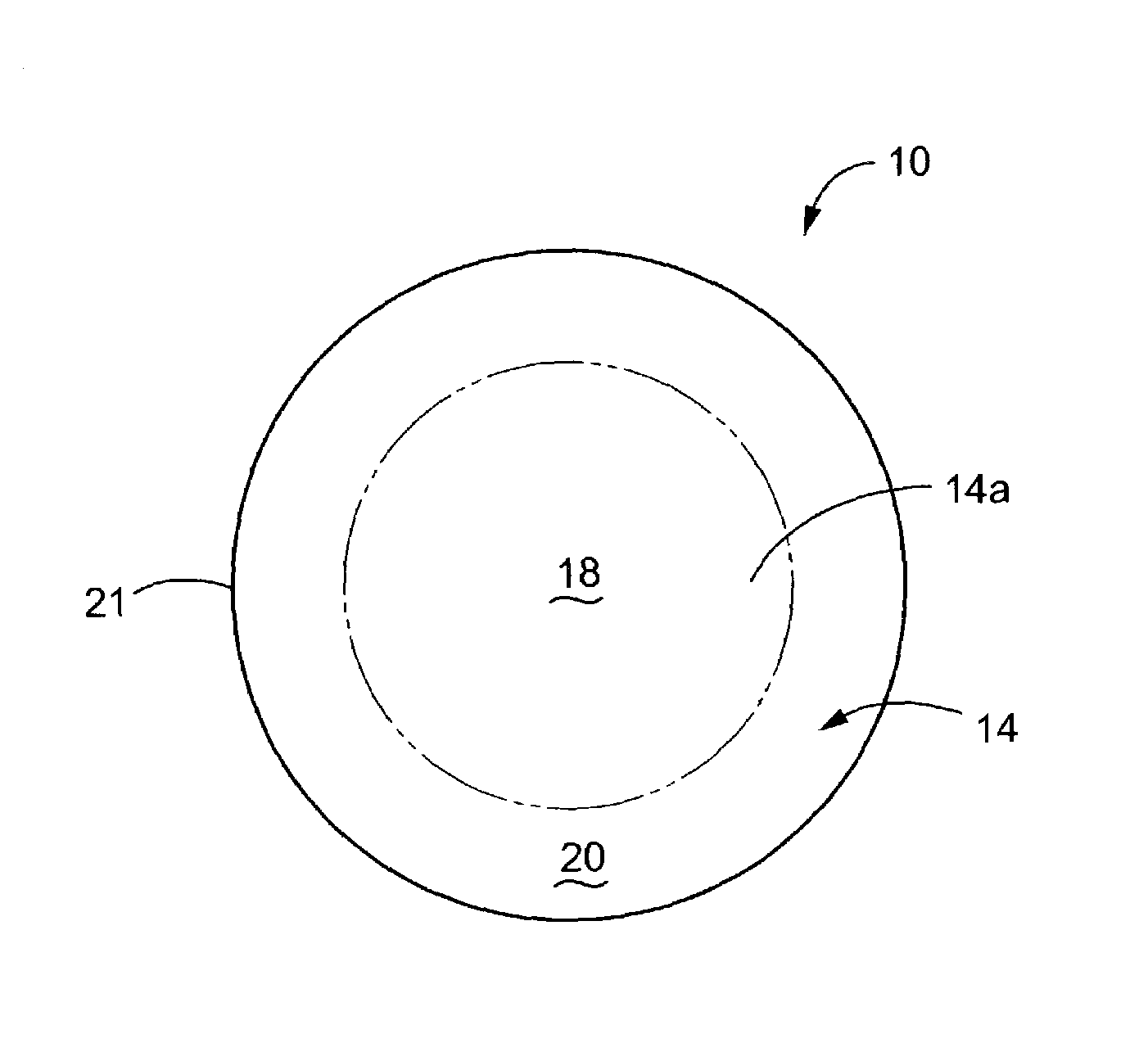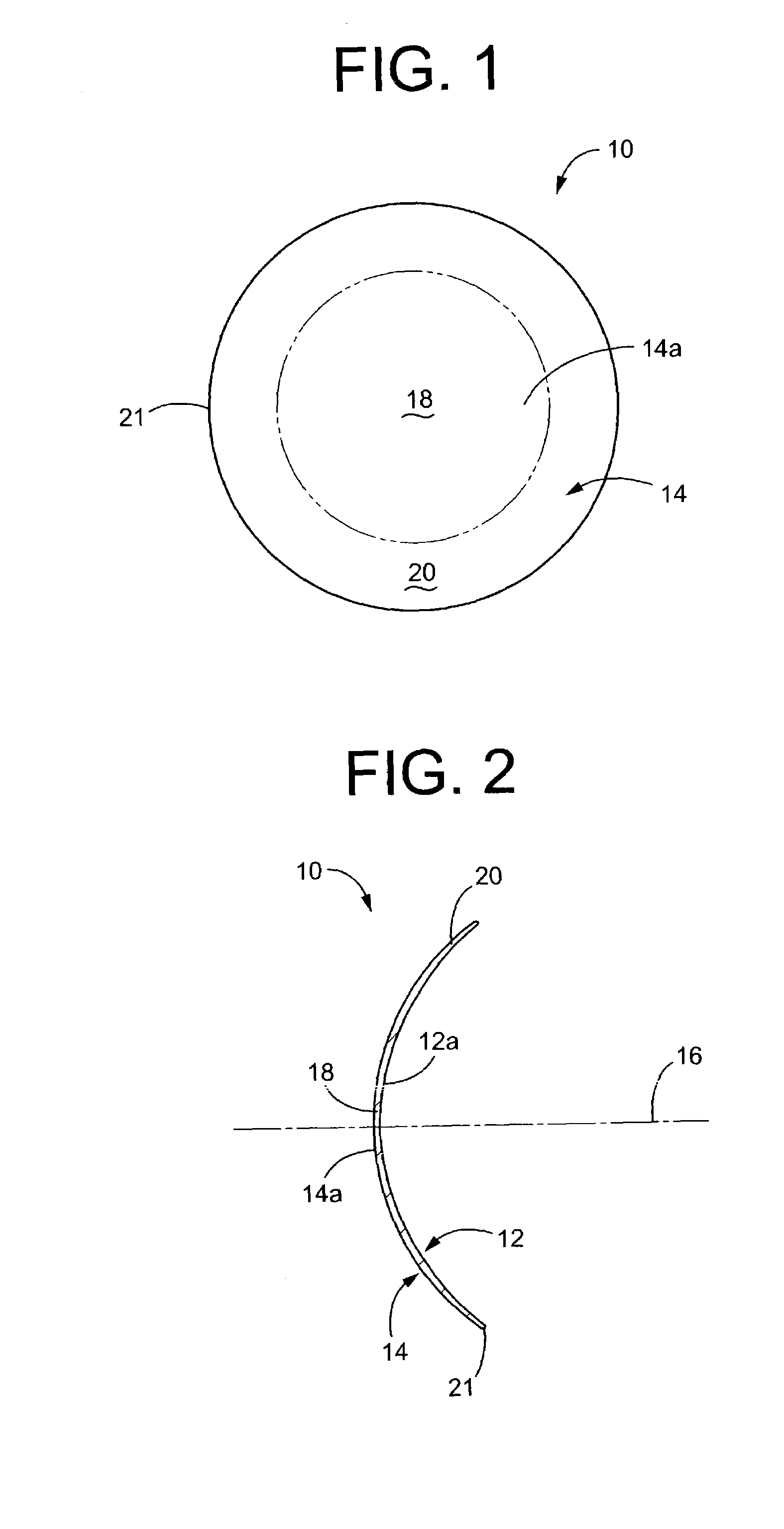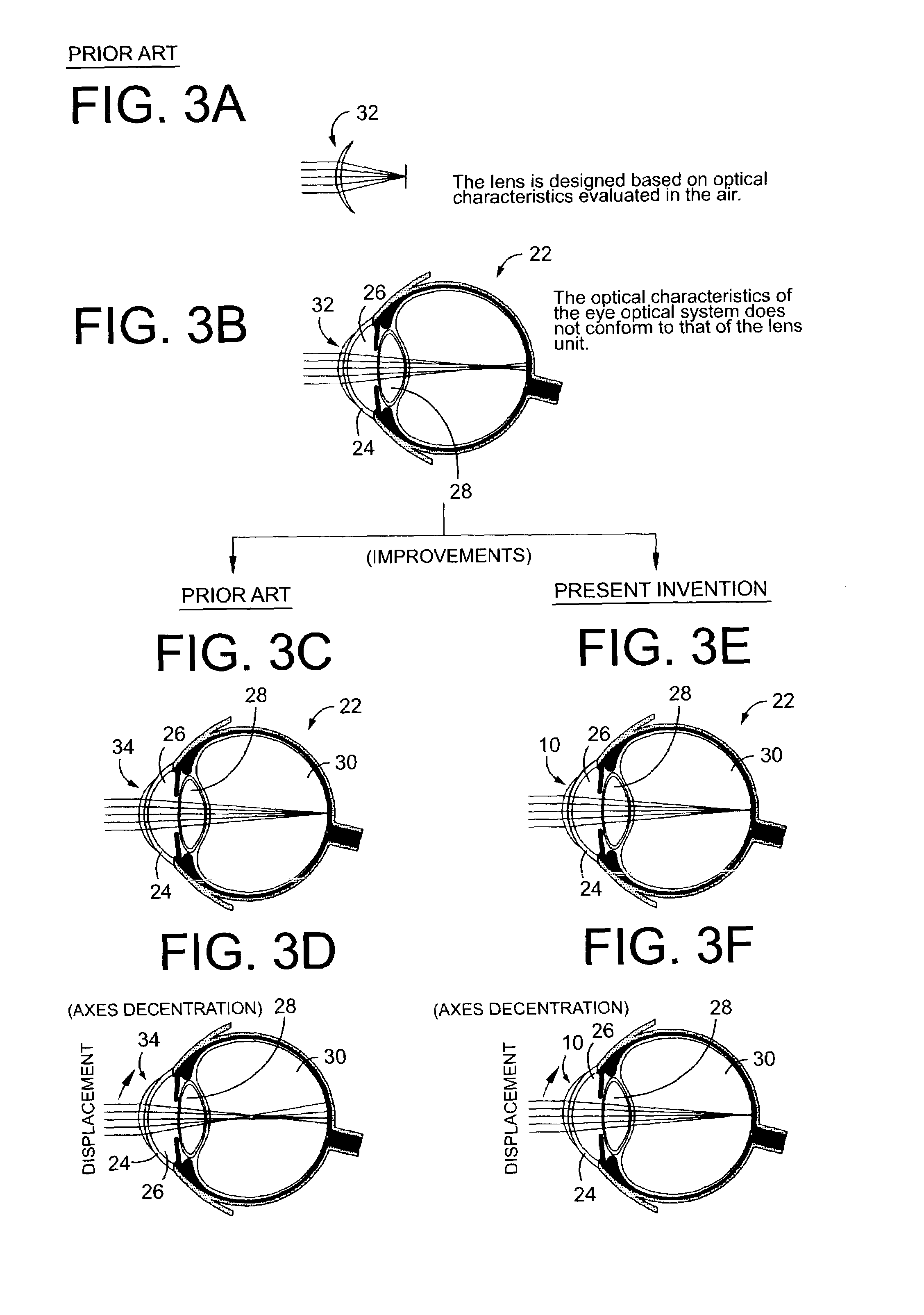Contact lens and contact lens design method
a technology of contact lens and design method, which is applied in the field of contact lens, can solve the problems of not being able to provide optimal correction of vision of lens wearers, unable to ignore, and insufficiently focusing on optical characteristics on the optical axis of contact lens design, etc., and achieves easy and satisfactory co-operation. , the effect of optimal vision
- Summary
- Abstract
- Description
- Claims
- Application Information
AI Technical Summary
Benefits of technology
Problems solved by technology
Method used
Image
Examples
example
[0062]For hard contact lenses of gas permeable polymethyl methacrylate (PMMA), optical simulations were used to arrive at conic coefficients for the front optical zone 14a that would afford optimal optical characteristics under conditions of wear producing predetermined decentration, assuming the back optical zone 12a to be a spherical convex surface consisting of a spherical surface with a conic coefficient Ka of −0.1225. The simulations in this example were run setting the back optical zone 12a vertex radius of curvature ra to ra=6.0 mm and r=9.0 mm. For lens decentration during wear, optical simulations were run on the assumption that the intersect angle φ of the lens optical axis and pupil centerline was φ=0°, 5° and 10°, determining in each case conic coefficient Kb of the front optical zone 14a, which provides the best optical system.
[0063]For the optical simulations, the Gullstrand model of the eye was used as the optical system of the eye for hypothesizing physical shape, us...
PUM
 Login to View More
Login to View More Abstract
Description
Claims
Application Information
 Login to View More
Login to View More - R&D
- Intellectual Property
- Life Sciences
- Materials
- Tech Scout
- Unparalleled Data Quality
- Higher Quality Content
- 60% Fewer Hallucinations
Browse by: Latest US Patents, China's latest patents, Technical Efficacy Thesaurus, Application Domain, Technology Topic, Popular Technical Reports.
© 2025 PatSnap. All rights reserved.Legal|Privacy policy|Modern Slavery Act Transparency Statement|Sitemap|About US| Contact US: help@patsnap.com



